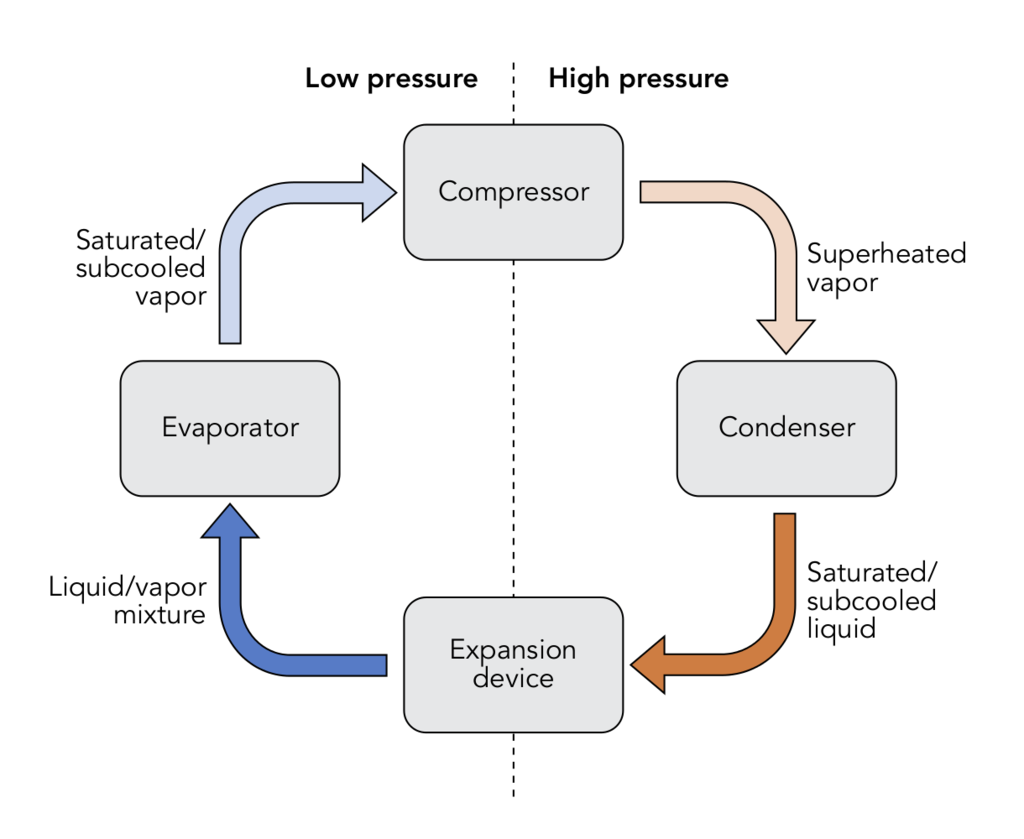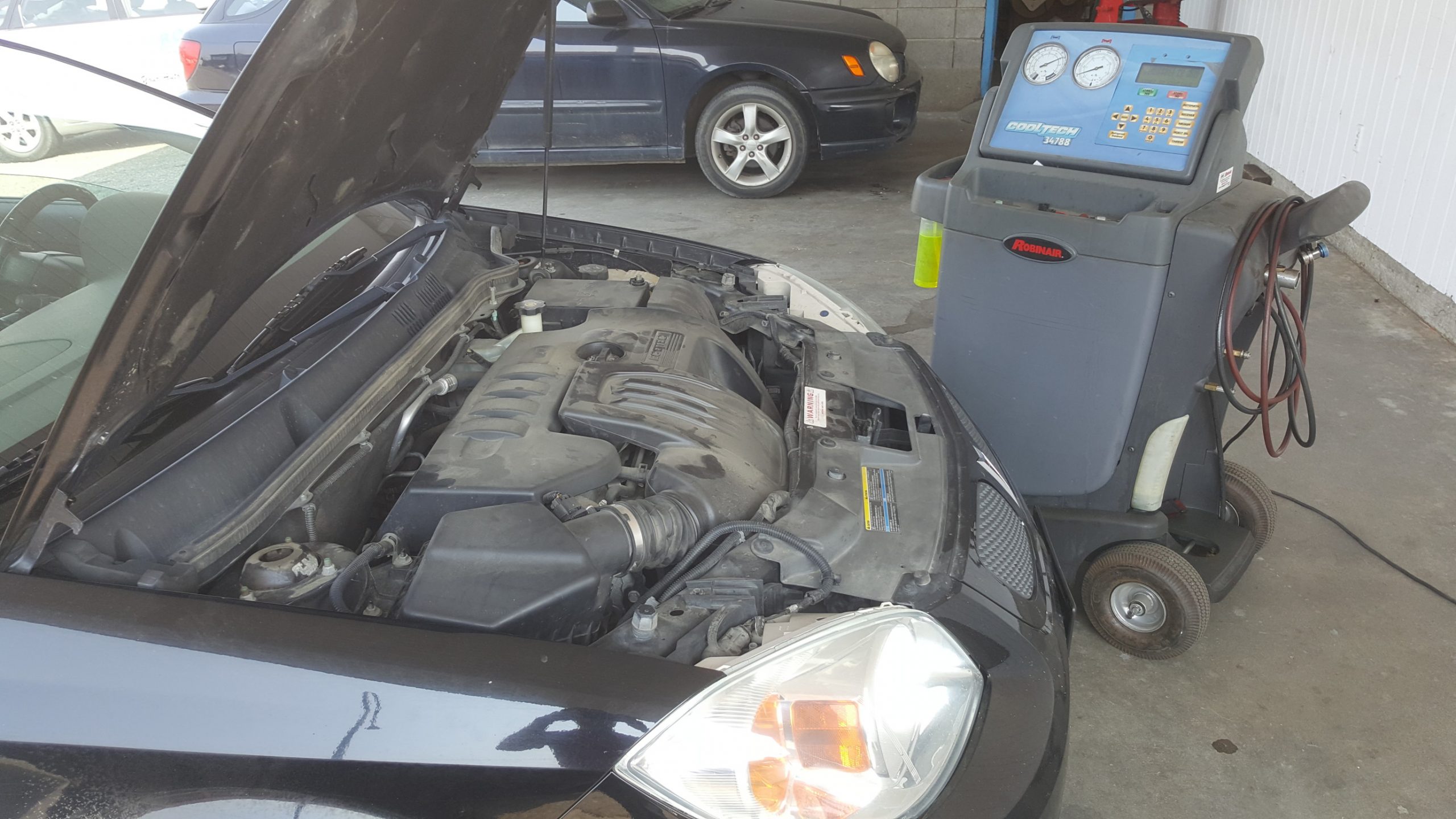
A heat pump cycle. Refrigerant enters the compressor and goes through the condenser to become a liquid. Then through the expansion device and in the evaporator where it becomes a gas. A fan blows over the evaporator and the air becomes cold.
The vehicle air conditioning (AC) system allows for cool air to be discharged from the dashboard vents when requested. The different components of the air conditioning include the compressor, condenser, metering valve, evaporator, and the connecting lines and hoses. Refrigerant gas is compressed by the compressor and is then condensed and cooled into a liquid in the condenser. When liquid refrigerant passes through a phase change from liquid to gas at the expansion orifice such as a orifice tube , expansion valve or expansion block energy is absorbed. The phase change in the refrigerant allows for heat absorption which we observe as a lower temperature than the surrounding environment. This temperature drop is then transferred to the evaporator core where air is forced through the evaporator by means of a blower motor which results in the cool air that we feel at the air vents on the dashboard.
Refrigerant gas may leak out over time, and the refrigerant may occasionally need to be recharged. This procedure should only be done after the whole air conditioning system has been tested for leaks and repaired. Refrigerants should be handled by qualified technicians. The various component parts of the air condition system may also fail and require replacement. If you feel that your AC system is not working properly, give us a call to see how we can help. ROKO SERVICE LTD. “Your Auto Electric Specialists”

